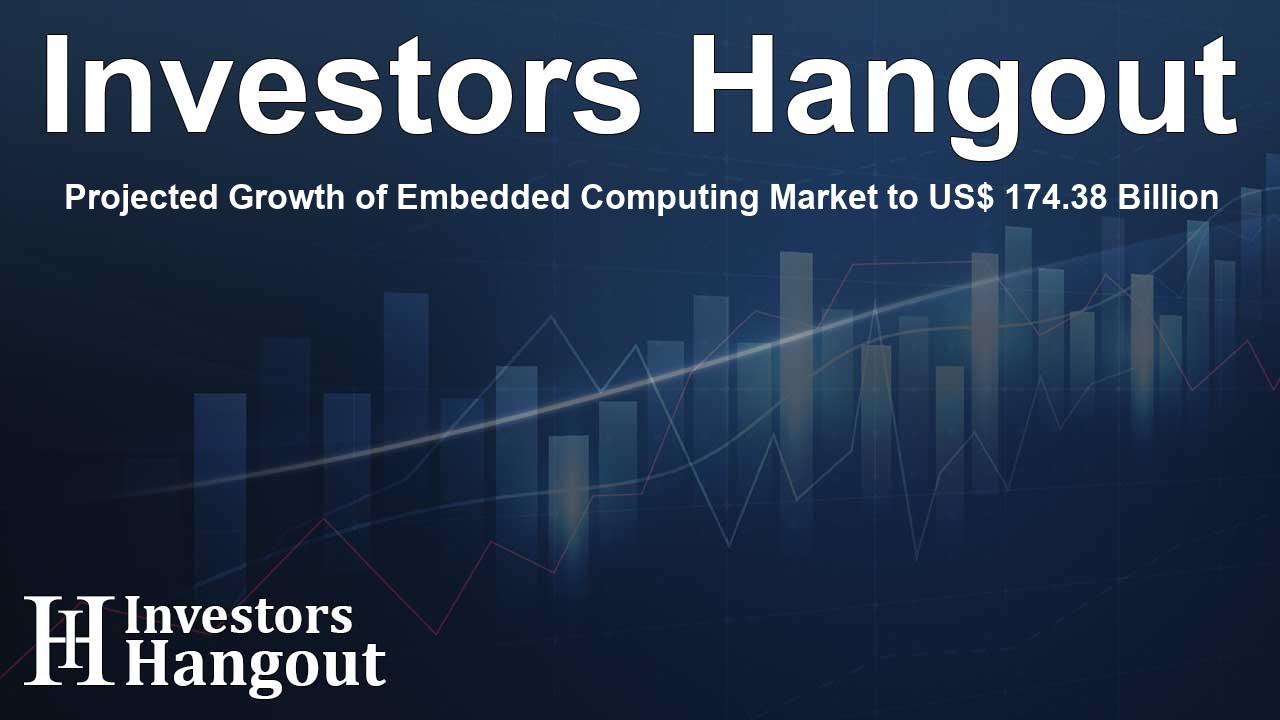Projected Growth of Embedded Computing Market to US$ 174.38 Billion

Embedded Computing Market: A Glimpse into the Future
According to recent insights into the global embedded computing market, it is estimated to be valued at USD 112.45 billion in the near future and is projected to exceed USD 174.38 billion by 2031. This represents a compound annual growth rate (CAGR) of approximately 6.5% from 2024 to 2031. The significant increase is primarily driven by heightened adoption of IoT across various industries, which allows numerous devices to connect and share data seamlessly over the internet.
Drivers of Market Growth
One of the primary factors propelling the embedded computing market is the escalating demand for IoT devices, as embedded systems are fundamental in supporting connectivity and ensuring efficient data sharing. The ongoing miniaturization of electronic components enables the integration of advanced embedded systems into smaller devices, thus expanding their applicability. Moreover, the decreasing cost of embedded chips also plays a pivotal role in augmenting the adoption of these systems. However, the absence of standardized connectivity protocols for IoT systems could pose challenges for market growth.
Emerging Edge Computing Trends
With the growing necessity to process IoT data in real-time, edge computing is gaining traction. This technology employs embedded systems positioned at the edge of networks to facilitate local data processing before it is sent to the cloud. By doing so, latency issues are minimized, ensuring prompt business operations and enhancing productivity.
Besides, the rise of embedded vision systems is an exciting trend that is reshaping various industries. These systems incorporate image sensors, processors, and software to provide robust visual capabilities, significantly benefiting sectors such as automotive, manufacturing, and healthcare. Their applications range from surveillance and inspection to broad automation processes.
Market Trends and Forecasts
Current Market Landscape
The hardware segment of the embedded computing market is expected to dominate throughout the forecast period due to the surge in demand for processors, microcontrollers, and various hardware components essential for embedded applications. Additionally, the software segment is anticipated to experience substantial growth, prompted by an increasing focus on developing high-end software solutions for applications spanning remote monitoring to data processing.
Key Players and Developments
Renowned companies are making strides in the embedded computing landscape. For instance, in March 2023, Qualcomm Technologies unveiled the world’s first integrated 5G IoT processors that are compatible with multiple operating systems. This advancement signifies a substantial leap forward in addressing the complexities of IoT integrations.
Moreover, Cybellum's collaboration with Jingwei HiRain Technologies highlights the industry's efforts to tackle burgeoning cybersecurity challenges, particularly in the automotive sector. Such developments underscore the increasing significance of security in embedded computing solutions.
Market Challenges and Opportunities
While the industry is thriving, it must navigate several hurdles, including high initial investments and complex design prerequisites. Additionally, concerns regarding security and data privacy present roadblocks to widespread adoption. Nevertheless, the growing array of connected devices and advancements in AI and edge computing are pivotal growth drivers that present lucrative opportunities.
Taking a Closer Look at the Regional Markets
Geographically, the North American region is poised to maintain a leading position during the forecast period due to early adoption of digital trends and the robust presence of significant embedded computing players. This offers a fertile ground for innovations and advancements.
Conclusion: A Promising Outlook
With the global embedded computing market anticipated to witness such impressive growth rates, it will be vital for stakeholders to embrace innovation and address existing challenges. As technologies continue to evolve, those involved in embedded computing will find themselves at the heart of the digital transformation, shaping the future landscape across various sectors.
Frequently Asked Questions
What is the projected market size of the embedded computing sector?
The embedded computing market is anticipated to reach USD 174.38 billion by 2031.
What are the primary factors driving market growth?
The major growth drivers include the rise of IoT adoption and developments in edge computing technologies.
Which segments are expected to dominate the market?
The hardware segment is expected to retain dominance, supported by wide usages of microcontrollers and sensors.
How is cybersecurity impacting the embedded computing market?
Cybersecurity challenges necessitate stringent measures, driving demand for secure embedded computing solutions.
What opportunities exist for embedded computing companies?
With rapid digitalization, companies can explore innovation in AI, edge computing, and customized software solutions.
About The Author
Contact Ryan Hughes privately here. Or send an email with ATTN: Ryan Hughes as the subject to contact@investorshangout.com.
About Investors Hangout
Investors Hangout is a leading online stock forum for financial discussion and learning, offering a wide range of free tools and resources. It draws in traders of all levels, who exchange market knowledge, investigate trading tactics, and keep an eye on industry developments in real time. Featuring financial articles, stock message boards, quotes, charts, company profiles, and live news updates. Through cooperative learning and a wealth of informational resources, it helps users from novices creating their first portfolios to experts honing their techniques. Join Investors Hangout today: https://investorshangout.com/
The content of this article is based on factual, publicly available information and does not represent legal, financial, or investment advice. Investors Hangout does not offer financial advice, and the author is not a licensed financial advisor. Consult a qualified advisor before making any financial or investment decisions based on this article. This article should not be considered advice to purchase, sell, or hold any securities or other investments. If any of the material provided here is inaccurate, please contact us for corrections.
